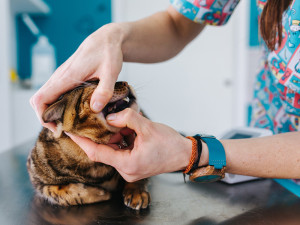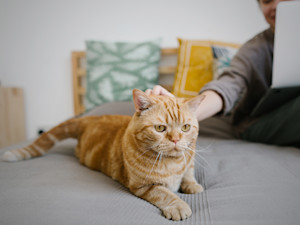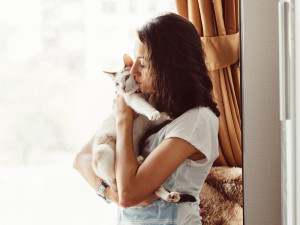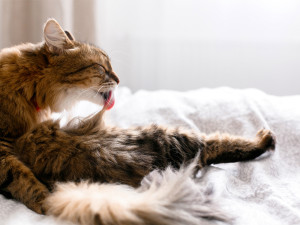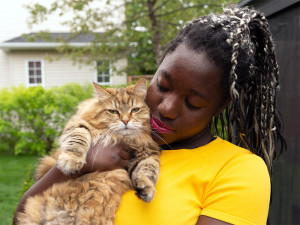Does My Cat Have Spots?
Pimples and spots can be unsightly and painful – here’s how to treat your cat’s acne
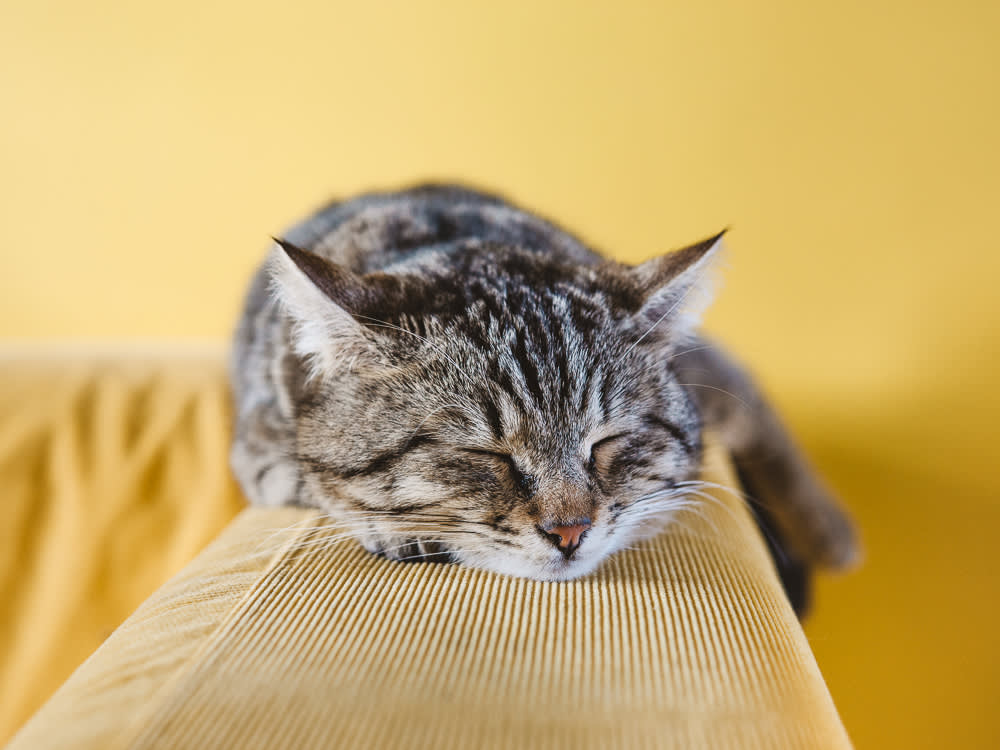
Share Article
Cats – they’re just like us. They love naps and they get acne. If your cat’s chin looks like the ‘before’ picture from a teenage acne advert, read on for how you can treat the breakout.
What does cat acne look like?
Feline acne can develop in a cat of any age, sex or breed. It occurs primarily on the chin and around the mouth. Cats will typically develop comedones (blackheads) that can progress to papules (raised bumps) or pustules (pesky whiteheads), let’s just call them pimples, often accompanied by hair loss. The area becomes itchy and irritated, causing your cat to want to rub their face on everything.
What causes cat acne?
A sole cause of cat acne has not been discovered. A mystery involving felines – shocking, right? The official term for feline acne is feline keratinization disorder, which means that their hair follicles are clogged with keratin, a protein found in skin. Factors that contribute to keratinization include poor hygiene, excessive sebum (oil) production, stress, underlying infection, a compromised immune system or allergies.
What can you do about your cat’s acne?
First, keep in mind that feline acne is usually a cosmetic issue and that your cat can live a perfectly happy and healthy life without treatment. The strategy for tackling feline acne depends on the severity of the symptoms and often includes a combination of diagnostic tests, preventative measures and routine maintenance.
Whatever you do, don’t pop them
Listen to beauty influencers when it comes to popping pimples – don’t do it! Popping your cat’s pimples can leave an open wound, introducing bacteria or spreading an infection that’s already present. It’s unnecessary and cats would much prefer that you scratch their head instead of squeezing their pimples, trust me.
Keep the affected area clean
Often, just cleaning the skin on your cat’s chin with mild soap and water is enough to keep acne in check. Your vet may recommend cleansers with active ingredients such as chlorhexidine, benzoyl peroxide or salicylic acid. Be sure to use a product recommended by your veterinarian for cats. Humans have a lower skin pH than cats, so cleansers designed for people can make matters worse.
Clip the hair away
Occasionally clipping matted fur away can help improve hygiene and ensure that topical treatments are able to penetrate your cat’s skin effectively.
Replace food and water bowls
Cat food bowls made of porous materials such as plastic can harbour bacteria that exacerbate acne (and whisker fatigue). Replacing them with ones made of non-porous materials like glass or stainless steel can be a quick fix as well as washing them regularly to help prevent future breakouts.
Treat secondary infections
When your cat rubs their chin excessively, pimples can pop and become infected. Any break in the skin creates an opportunity for infection to develop and can delay healing. Chronically moist areas create an ideal environment for yeast to overgrow, too. Your vet may recommend medicated wipes, shampoos or systemic medications to treat secondary bacterial or fungal infections.
What if my cat’s acne isn’t improving?
If your cat’s acne is worsening despite treatment or is spreading to other areas on their face, your vet may recommend skin tests to rule out other causes. Skin scraping can diagnose demodicosis, an infestation of Demodex mites that inhabit the skin and hair follicles. Cats infested with Demodex cati or Demodex gatoi will develop hair loss, itching and scabs.
Demodex cati tends to affect cats with compromised immune systems, such as cats who have feline immunodeficiency virus (FIV), feline leukaemia virus (FeLV) or diabetes. Demodex gatoi is more concerning because it can spread to other cats through contact. If multiple cats in your household develop itchy, hairless patches, get them checked out as soon as possible.
Just like human acne, feline acne can be a frustrating condition to keep under control, but these tips (plus working out a maintenance strategy with your vet) can help keep your kitty pimple-free and as cute as ever.

Dr. Alycia Washington, DVM, MS
Alycia Washington, DVM, is a small animal emergency veterinarian based in North Carolina. She works as a relief veterinarianopens in new tab and provides services to numerous emergency and specialty hospitals. She also works as a veterinary writer with a focus on educating pet owners.
Related articles
![Unrecognizable woman petting an ill cat]()
Something No One Wants to Talk About: Cat Cancer
Veterinarian Dr Alycia Washington breaks down the five most common types of cancer in cats, from how to spot the early signs to how to treat them
![cat hair loss]()
Is My Cat Going Bald?
Don’t start shopping for cat wigs yet. But if your Persian is looking more like a Sphynx, underlying health conditions could be to blame for your cat’s hair loss
![Owner pets senior ginger cat.]()
6 Common Health Concerns in Senior Cats
How to spot and how to treat them
Cat Allergies: Do Hypoallergenic Cats Exist?
If the sniffles are getting you down, don’t stress: you have options

